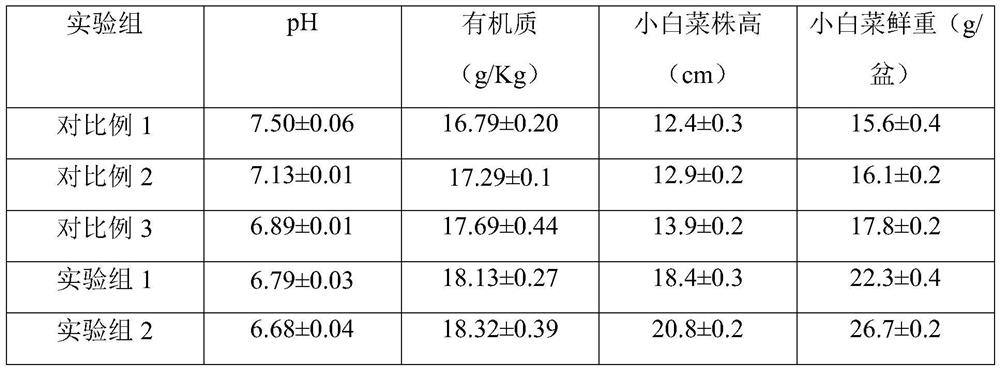Method for preparing bio-organic fertilizer from kitchen garbage
A bio-organic fertilizer and kitchen waste technology is applied in the preparation of organic fertilizers, the treatment of bio-organic parts, and organic fertilizers. Social effects, improved crop growth, high production efficiency
- Summary
- Abstract
- Description
- Claims
- Application Information
AI Technical Summary
Problems solved by technology
Method used
Image
Examples
Embodiment 1
[0037] The method of the bio-organic fertilizer of the present embodiment may further comprise the steps:
[0038] (1) Collect the kitchen waste after garbage sorting, its moisture content is 80%, and use it after being crushed to 12-60mm;
[0039] (2) With straw as the substrate, the particle size after crushing is 0.5cm;
[0040] (3) Primary fermentation: Mix kitchen waste and straw at a mass ratio of 2:1, then add a total mass of 1‰ decomposed bacteria (Baiyibao EM bacteria), adjust the moisture content to 60%, and start fermentation for 7 days , turn the pile once a day, and keep the temperature above 50°C;
[0041] (4) Secondary fermentation: add duck feathers with a total mass of 10% to the fermented product after the first fermentation, and then add a total mass of 0.1% feather-degrading bacteria agent, and ferment again for 7 days to finally obtain bioorganic Fat.
Embodiment 2
[0043] The method of the bio-organic fertilizer of the present embodiment may further comprise the steps:
[0044] (1) Collect the kitchen waste after garbage sorting, its moisture content is 70%, and use it after crushing to 12-60mm;
[0045] (2) With straw as the substrate, the particle size after crushing is 1cm;
[0046] (3) Primary fermentation: Mix kitchen waste and straw at a mass ratio of 3:1, then add a decomposing bacterial agent with a total mass of 2‰, adjust the moisture content to 50%, start fermentation for 7 days, turn the pile once a day, and keep the temperature Above 50°C;
[0047] (4) Secondary fermentation: add chicken feathers with a total mass of 15% to the fermented product after the first fermentation, and then add a total mass of 0.5% feather-degrading bacteria agent, and ferment again for 10 days to finally obtain bio-organic fertilizer .
Embodiment 3
[0049] The method of the bio-organic fertilizer of the present embodiment may further comprise the steps:
[0050](1) Collect the kitchen waste after garbage sorting, its moisture content is 80%, and use it after being crushed to 12-60mm;
[0051] (2) With straw as the substrate, the particle size after crushing is 1cm;
[0052] (3) Primary fermentation: Mix kitchen waste and straw at a mass ratio of 5:1, then add a total mass of 2‰ of decomposing bacteria, adjust the moisture content to 40%, start fermentation for 9 days, turn the pile once a day, and keep the temperature Above 50°C;
[0053] (4) Secondary fermentation: Add chicken feathers with a total mass of 20% to the fermented product after the first fermentation, and then add a total mass of 1% feather-degrading bacteria agent, and ferment again for 7 days to finally obtain bio-organic fertilizer .
PUM
| Property | Measurement | Unit |
|---|---|---|
| particle diameter | aaaaa | aaaaa |
| particle diameter | aaaaa | aaaaa |
| particle diameter | aaaaa | aaaaa |
Abstract
Description
Claims
Application Information
 Login to View More
Login to View More - R&D
- Intellectual Property
- Life Sciences
- Materials
- Tech Scout
- Unparalleled Data Quality
- Higher Quality Content
- 60% Fewer Hallucinations
Browse by: Latest US Patents, China's latest patents, Technical Efficacy Thesaurus, Application Domain, Technology Topic, Popular Technical Reports.
© 2025 PatSnap. All rights reserved.Legal|Privacy policy|Modern Slavery Act Transparency Statement|Sitemap|About US| Contact US: help@patsnap.com



